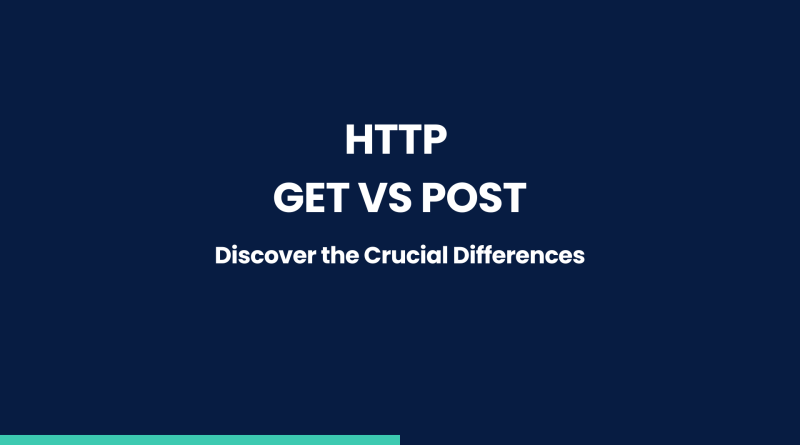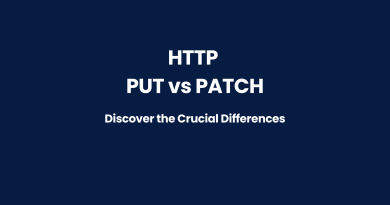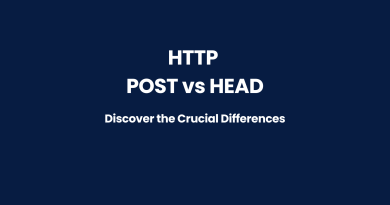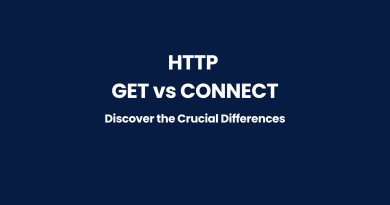HTTP GET vs POST: Discover the Crucial Differences
In this blog post, we will delve into the specifics of HTTP GET and POST methods, comparing their key characteristics, use cases, and how they impact web request efficiency. By the end of this article, you will have a better understanding of these crucial HTTP methods and be better equipped to make informed decisions when designing and building web applications. So, let’s dive in and discover the fascinating world of HTTP GET and POST!
Brief Overview of the HTTP Protocol
Before we dive into the differences between GET and POST, let’s take a moment to familiarize ourselves with the HTTP protocol. HTTP, or Hypertext Transfer Protocol, is the foundation of data communication on the World Wide Web. It is a request-response protocol that operates at the application layer of the Internet protocol suite. This means that it serves as a bridge between clients, such as web browsers, and servers that host web resources like websites and APIs.
In an HTTP transaction, the client sends a request to the server, which then processes the request and sends back an appropriate response. This exchange of information is facilitated by HTTP methods, which define the action to be performed on the specified resource.
Role of HTTP Methods in Web Communication
HTTP methods play a crucial role in determining how clients and servers interact with each other. Each HTTP method specifies a particular action that should be taken on the targeted resource, such as reading, creating, updating, or deleting data. By selecting the appropriate HTTP method, developers can ensure that their web applications function as intended and adhere to the principles of RESTful architecture.
Some of the most common HTTP methods include GET, POST, PUT, DELETE, and HEAD. Each of these methods serves a specific purpose and has its own set of characteristics, which impact how requests and responses are processed. In this article, we will focus on the two most frequently used HTTP methods – GET and POST – and explore their unique features, as well as how they affect web request efficiency.
Definition and Purpose of HTTP GET Method
The GET method is one of the most fundamental and widely used HTTP methods. As the name suggests, it is used to “get” or retrieve information from a server. When a client sends a GET request, it is essentially asking the server to provide the specified resource without making any modifications to it.
The primary purpose of the GET method is to fetch data from the server in a read-only manner. This means that GET requests should never be used for actions that modify data or have any side effects. Instead, they are best suited for situations where the client simply wants to obtain information, such as viewing a web page, downloading a file, or retrieving data from an API endpoint.
Definition and Purpose of HTTP POST Method
The POST method is another fundamental HTTP method used to send data to the server. Unlike the GET method, which is focused on retrieving information, the primary purpose of POST is to submit data to the server, potentially resulting in the creation of a new resource or an update to an existing one.
When a client sends a POST request, it is asking the server to accept and process the data provided in the request body. This data can be used to create new records, update existing ones, or perform other data-related operations, depending on the server’s implementation.
The POST method is often used in situations where data needs to be submitted by the client, such as filling out a form on a website, uploading a file, or creating a new user account. A common example of a POST request is when you submit a comment on a blog post – your browser sends a POST request to the server containing the comment data, and the server processes the request to store the comment in its database.
Comparing GET and POST
When it comes to web request efficiency, understanding the key differences between GET and POST methods are crucial. In this section, we will examine some of these differences and discuss the factors to consider when choosing the appropriate method for a particular use case.
| Comparison Aspect | GET Method | POST Method |
|---|---|---|
| Data Size Limits | Limited data size, sent as part of the URL | Larger data size, sent within the request body |
| Cacheability | Cacheable by default, improves web request efficiency | Not cacheable by default, ensures up-to-date data |
| Idempotency and Safety | Idempotent and safe, with no side effects or data changes | Non-idempotent and unsafe may create/update resources |
| Nature of the Request | Suitable for data retrieval without modification | Appropriate for submitting or updating data |
| Security Concerns | Sensitive data exposed in URLs, less secure | More secure, data sent within the request body |
| Server Load and Bandwidth | Reduced load and saved bandwidth due to caching | Potentially higher load and bandwidth usage |
Key Differences in Efficiency
1. Data Size Limits
One significant difference between GET and POST methods lie in the amount of data that can be sent with each request. GET requests have a limited data size, as the data is sent as part of the URL in the form of query parameters. This constraint can lead to issues when attempting to send large amounts of data or very long URLs, as it might exceed the maximum URL length supported by some browsers and servers.
On the other hand, POST requests can handle larger amounts of data, as the data is sent within the request body. This makes POST a more suitable choice for scenarios where substantial amounts of data need to be sent to the server.
2. Cacheability
Another key difference between GET and POST methods are their cacheability. GET requests are cacheable by default, meaning that the server’s response can be stored by the client and reused for subsequent requests. This can significantly improve web request efficiency, as it reduces the need for repeated requests to the server for the same data.
POST requests, however, are not cacheable by default. This is because POST requests typically involve data manipulation or the creation of new resources, and caching such responses could lead to inconsistent or outdated data being presented to the client.
3. Idempotency and Safety
GET requests are both idempotent and safe. This means that making the same GET request multiple times should have no additional side effects and should not modify any data on the server. This characteristic makes GET a reliable choice for fetching data without causing unintended changes to server resources.
In contrast, POST requests are neither idempotent nor safe. Repeating a POST request may lead to the creation of duplicate resources or multiple updates, which can cause issues with data consistency and reliability.
Factors to Consider When Choosing the Appropriate Method
1. Nature of the Request
The primary factor to consider when choosing between GET and POST methods are the nature of the request. If the request is intended to fetch data without modifying server resources, the GET method is the appropriate choice. Conversely, if the request involves submitting or updating data, the POST method should be used.
2. Security Concerns
Security is another crucial factor to consider when deciding between GET and POST. Since GET requests send data as part of the URL, sensitive information may be exposed in browser history, logs, or bookmarks. For requests involving sensitive data or authentication, the POST method is typically more secure, as it sends data within the request body.
3. Server Load and Bandwidth
Finally, consider the impact of the chosen method on server load and bandwidth. Since GET requests are cacheable, they can help reduce server load and save bandwidth by allowing clients to reuse previously fetched data. However, if the request involves substantial amounts of data or requires frequent updates, the POST method may be more appropriate to ensure accurate and up-to-date information.
Best Practices for Using GET and POST
Now that we have explored the key differences between GET and POST methods and their impact on web request efficiency, let’s take a look at some best practices for using these methods in your web applications.
Using GET for Safe and Idempotent Operations
As mentioned earlier, GET requests are both safe and idempotent. This makes them an ideal choice for operations that involve retrieving data without causing any modifications to server resources. Examples of such operations include fetching web pages, downloading files, and accessing public API endpoints.
To ensure the best possible web request efficiency and maintain the principles of RESTful architecture, use GET for all read-only operations. This will help reduce server load, save bandwidth, and provide a more reliable user experience.
Using POST for Data Manipulation and Creation
The POST method should be used for operations that involve data manipulation or the creation of new resources. By using POST for these operations, you can ensure that the appropriate actions are taken on the server side and that the client receives accurate, up-to-date information.
Examples of operations where POST is the appropriate choice include submitting forms, uploading files, and creating new user accounts. Remember that POST requests are neither safe nor idempotent, so it’s essential to handle them carefully to avoid potential data inconsistencies or duplicate resource creation.
Ensuring Security and Privacy for Sensitive Data
When dealing with sensitive data, such as personal information, authentication credentials, or financial details, it’s crucial to prioritize security and privacy. As GET requests send data as part of the URL, they may expose sensitive information in browser history, logs, or bookmarks.
In these cases, it’s generally better to use the POST method, which sends data within the request body, providing a more secure way to transmit sensitive information. Additionally, consider implementing HTTPS (Hypertext Transfer Protocol Secure) to encrypt the data transmitted between the client and the server, further enhancing the security of your web applications.
See Also
HTTP POST Method: Comprehensive Guide
HTTP PUT Method: Comprehensive Guide
HTTP DELETE Method: Comprehensive Guide
HTTP HEAD Method: Comprehensive Guide
HTTP OPTIONS Method: Comprehensive Guide



